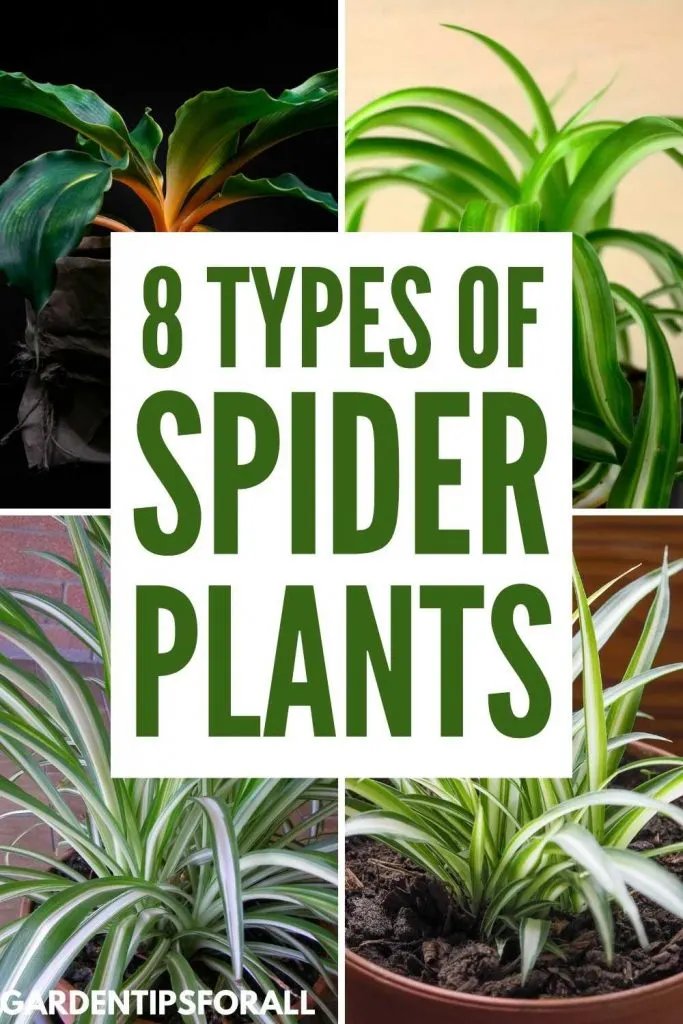Spider Plant Varieties (8 Different Types of Spider Plants – Names and Pictures)
Spider plants are popular indoor plants in many homes due to the fact that these easy to care for plants can be grown by those of us that lack a “green thumb.”
However, what most people don’t know is that there are over 200 different types of spider plants, and many of these spider plant varieties are considered to be rare plants.
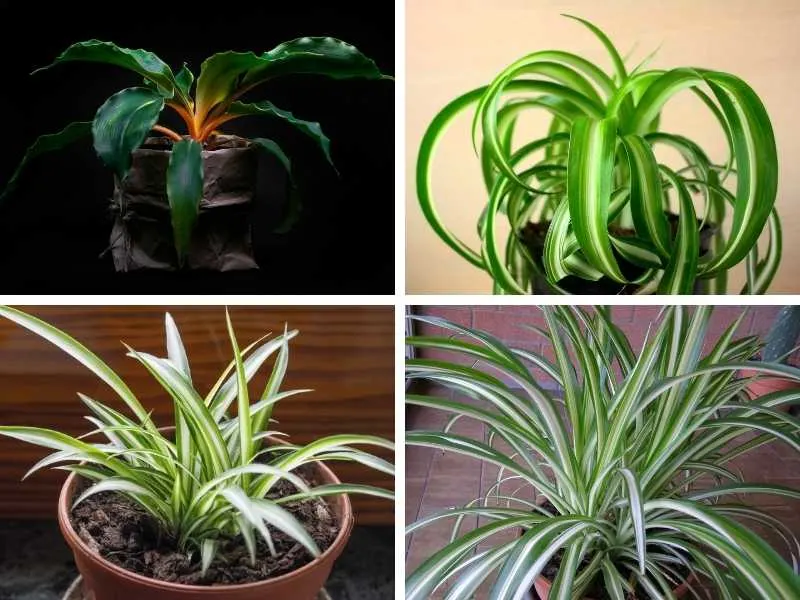
Related Articles:
- 8 Alternatives to Lavender
- 15 Peace Lily Varieties
- 9 Best Balcony Plants for Privacy
- 10 Amazing Plants with Purple and Green Leaves
- 8 Awesome Red Leaved Houseplants
General Information About Spider Plants
As a general rule spider plants are known to be native to South Africa. These plants can be grown indoors all year round and outdoors as annuals during the summer months.
And if you are looking for indoor plants with striped leaves, then spider plants are definitely one of your best options. It is also one of the best plants for bathrooms with no windows.
While most spider plants work best as hanging plants, some types of this plant make excellent ground cover.
The average household spider plant grows around 10 inches to a foot tall and about a foot wide. Spider plants leaves may contain light green, dark green, white, or yellow coloring with most of these plants having leaves that are narrow and pointed at the tips.
Spider plants get their name due to the fact that many of these plants have “babies” that grow from the end of a round vine. These babies look like spiders. Many of these plants also grow small white flowers that bloom during the summer months.
Best of all, these plants have a life span of up to 20 years with the right care.
Categories of Spider Plants
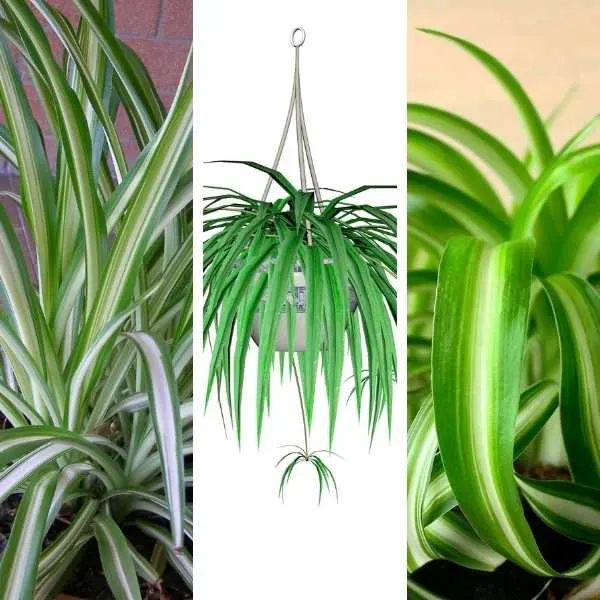
Spider plants can be divided into 3 general categories. These categories include variegated, non-variegated and curly.
- The variegated type of spider plant is the most common and easiest of these plants to find. The leaves of these plants are normally white and green or green and yellow.
- Non-variegated spider plants also referred to as “shamrock spider plants” have solid green leaves and can be more difficult to find unless you can find a nursery that carries this category of spider plant.
- The last category of spider plant is known as curly spider plants due to the fact that the leaves of these plants are curly, kind of like ribbon you curl for decorating packages. This type of spider plant is very rare, and you may need to order this category of plant off the Internet since most area nurseries don’t carry this category of plant.
8 Different Types of Spider Plants
While it would be impossible to cover every type of spider plant known to man here are a few different types that may be of interest to you.
#1. Common Spider Plant

The common spider plant carries the scientific name of Chlorophytum Comosum Vittatum. This variegated spider plant is the most common of all spider plants that most people recognize.
This plant has slightly curled medium green leaves with broad creamy stripes running down the center of each leaf.
This plant has small white flowers that grow as well as vines bearing “baby” plants. The plant may grow from one to two feet high and one to two feet wide.
It grows best in direct sunlight and moist soil although it is drought tolerant. When grown out of doors this plant can really set off begonias and impatiens.
#2. Reverse Variegated Spider Plant
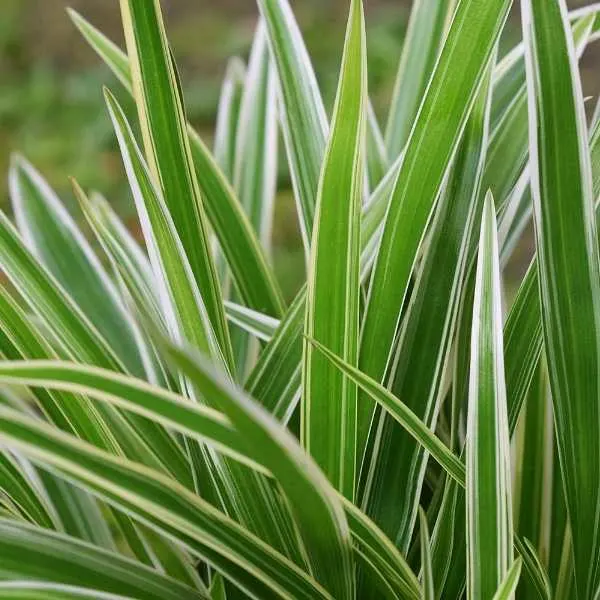
The reverse spider plant whose scientific name is Chlorophytum Comosum Variegatum looks like the common spider plant with the leaves colored in reverse. The leaves of this plant are dark forest green with soft yellow edges.
This plant also has white flowers and spider-like shoots. The plant can get quite large, growing 2 to 3 feet tall. It grows best when it gets some bright light during part of the day.
#3. Shamrock or Ocean Spider Plant
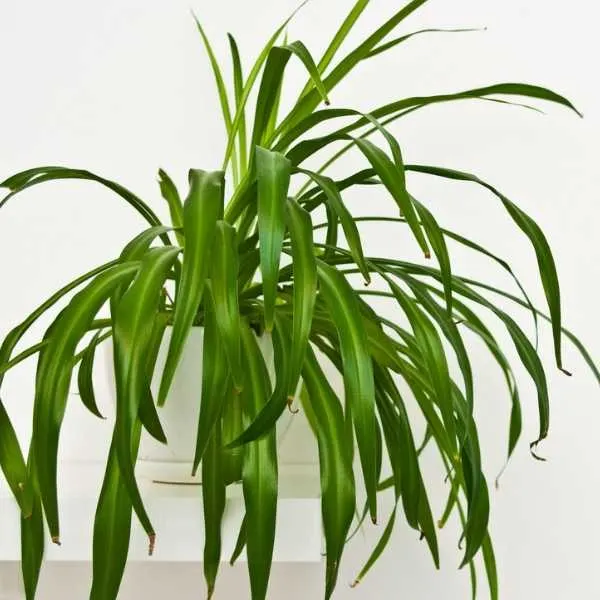
The Shamrock or Ocean spider plant also known as Chlorophytum Conosum is a plant with solid green leaves (no stripes or edging of a different color.)
This is a somewhat rare type of spider plant that is known to clean the air, removing toxins such as carbon monoxide.
This plant grows well in Indirect or artificial light and moist soil that is neither too wet nor dry.
#4. Zebra Spider Plant
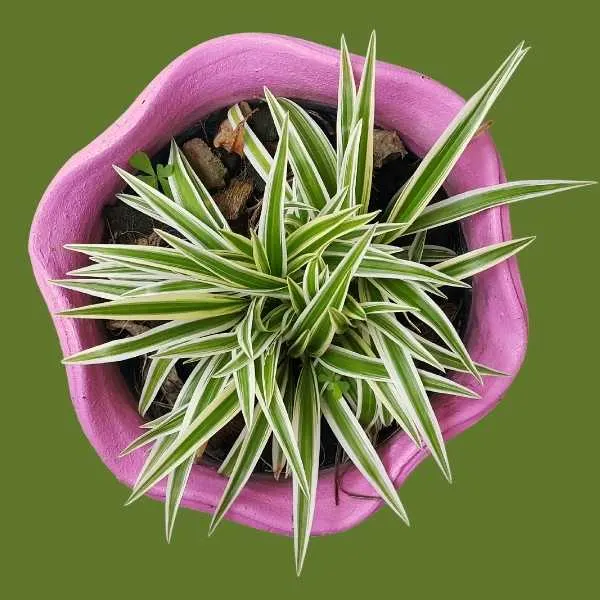
The Zebra spider plant whose scientific name is Chlorophytum Laxum looks a lot like the reverse spider plant with a green center and yellow edges. However, the yellow edges of this plant are very bright.
Although this plant is not as tall as most spider plants, it is quite wide. This plant does have white flowers and grows best in partial shade. They also do well as ground covers as well as in hanging baskets.
#5. Bonnie Spider Plant
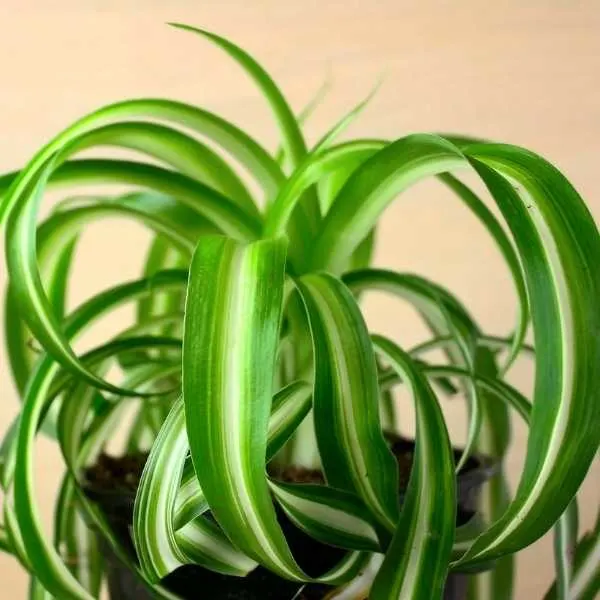
The Bonnie spider plant is one of the plants in the curly variety of the plant. Its scientific name is Chlorophytum Conosum ‘Bonnie’.
This plant may come with either variegated leaves or plain green with the leaves being exceptionally curly. This spider plant is smaller than many other spider plants and bears yellow colored flowers.
#6. Orange Spider Plant
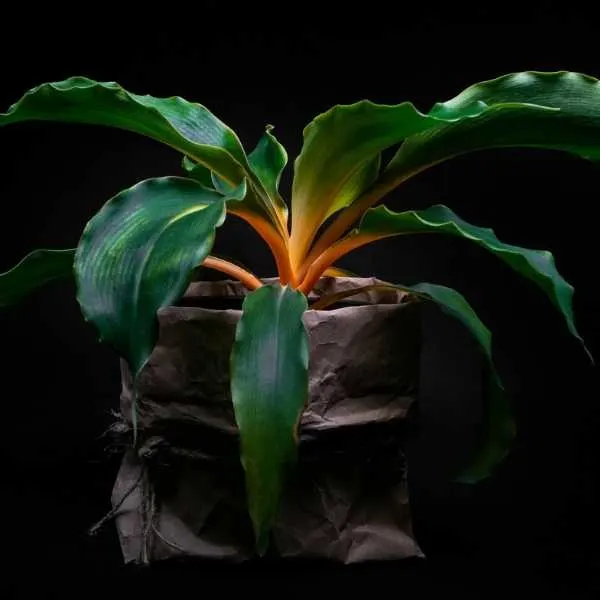
The orange spider plant, which has the scientific name chlorophytum Orchidastrum is not really orange, but does have bright orange stems that turns into broad shiny green leaves.
This plant grows about 2 feet tall and 1 to 2 feet wide. And it grows best in partial shade and moist soil.
#7. Purple Spider Plant
The purple spider plant or Violet Queen spider plant has green aromatic leaves and baby purple spiders.
It also produces sweet smelling violet colored flowers. This plant can grow to 3 to 4 feet tall and 1 to 2 feet wide and does best in full sunlight and well-drained soil.
#8. Hawaiian Spider Plant
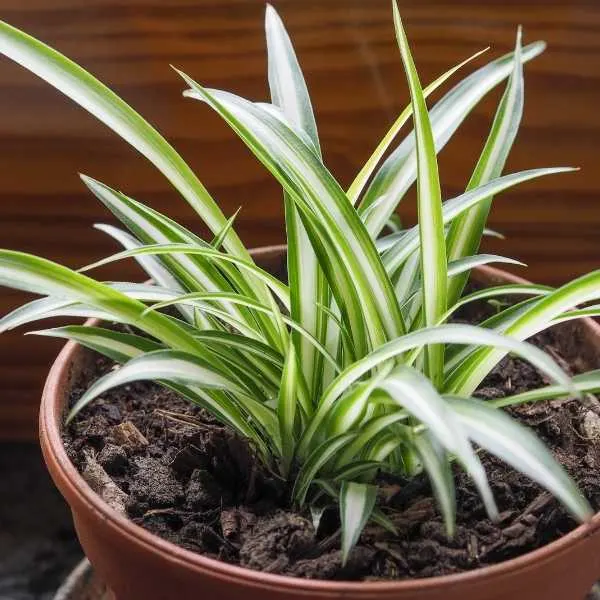
The Hawaiian spider plant is also referred to as a “golden glow” spider plant. The scientific name for this plant is Chlorophytum Viridescens Hawaiian.
This is a small size plant that grows only 6 inches to 1 foot tall. The plant has glossy green striped leaves. It also does its best when grown in partial shade and moist well-drained soil.
Final Thoughts on the Different Kinds of Spider Plants
There are many more types of spider plants you can explore, but we found these plants to either be the most common and easy to grow or the most interesting.
